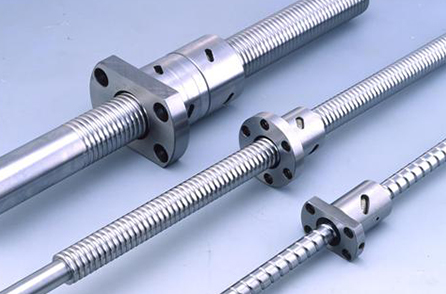新聞中心
共潤科技為您介紹直線導(dǎo)軌熱處理工藝
來源:http://www.baoxianyingxiao.cn/ 日期:2021-07-30 發(fā)布人:
(一).退火的種類
(1) . type of annealing
1.完全退火與等溫退火
1. Complete annealing and isothermal annealing
完全退火又稱重結(jié)晶退火,通常稱為退火,這種退火主要用于亞共析成分的各種碳鋼和合金鋼的鑄,鍛件及熱軋型材,有時也會用于焊接結(jié)構(gòu)。一般常用于一些不重要工件的熱處理,或作為某些工件的預(yù)先熱處理。
Complete annealing is also called crystallization annealing, which is usually called annealing. This annealing is mainly used for casting, forging and hot-rolled profiles of various carbon and alloy steels with hypoeutectoid composition, and sometimes for welded structures. It is generally used for the final heat treatment of some unimportant workpieces or as the pre heat treatment of some workpieces.
2.球化退火
2. Spheroidizing annealing
球化退火主要用于過共析的碳鋼及合金工具鋼(例如像制造刃具,量具,模具所用的鋼種)。其主要目的在于降低硬度,改善切削加工性,為以后淬火作好準(zhǔn)備。
Spheroidizing annealing is mainly used for hypereutectoid carbon steel and alloy tool steel (such as steel used for manufacturing cutting tools, measuring tools and molds). Its main purpose is to reduce hardness, improve machinability and prepare for future quenching.

3.去應(yīng)力退火
3. Stress relief annealing
去應(yīng)力退火又稱低溫退火(或高溫回火),這種退火主要用來鑄件,鍛件,焊接件,熱軋件,冷拉件等的殘余應(yīng)力。如果這些應(yīng)力不予,將會引起鋼件在一定時間以后,在隨后的切削加工過程中產(chǎn)生變形或裂紋。
Stress relief annealing, also known as low temperature annealing (or high temperature tempering), is mainly used to eliminate the residual stress of castings, forgings, weldments, hot rolled parts, cold drawn parts, etc. If these stresses are not eliminated, deformation or cracks will occur in the subsequent cutting process after a certain time.
(二).淬火
(2) . quenching
為了提高直線導(dǎo)軌硬度采取的方法,主要形式是通過加熱、保溫、速冷。常用的冷卻介質(zhì)是鹽水,水和油。鹽水淬火的工件,容易得到較高的硬度與光潔表面,不容易產(chǎn)生淬不硬的軟點,缺點是容易導(dǎo)致工件變形嚴(yán)重,甚發(fā)生開裂。而用油作淬火介質(zhì)只適用于過冷,奧氏體的穩(wěn)定性比一些合金鋼或小尺寸的碳鋼工件淬火效果較好。
In order to improve the hardness of linear guide rail, the main forms are heating, thermal insulation and rapid cooling. The common cooling media are brine, water and oil. The workpiece quenched by brine is easy to obtain high hardness and smooth surface, and it is not easy to produce soft spots that cannot be hardened. The disadvantage is that it is easy to cause serious deformation and even cracking of the workpiece. Using oil as quenching medium is only suitable for undercooling. The stability of austenite is better than that of some alloy steel or small-size carbon steel workpieces.
(三).回火
(3) . tempering
1.降低脆性,或減少內(nèi)應(yīng)力,鋼件淬火后存在很大內(nèi)應(yīng)力和脆性,如不及時回火往往會使鋼件發(fā)生變形甚是開裂狀態(tài)。
1. Reduce brittleness and eliminate or reduce internal stress. Steel parts have great internal stress and brittleness after quenching. If they are not tempered in time, they will often deform or even crack.
2.獲得工件所要求的機械性能,工件經(jīng)淬火后硬度高而脆性大,為了滿足各種工件的不同性能要求,通過適當(dāng)回火的配合來調(diào)整其硬度,減小脆性,得到所需要的韌性,塑性。
2. Obtain the mechanical properties required by the workpiece. After quenching, the workpiece has high hardness and high brittleness. In order to meet the different performance requirements of various workpieces, adjust its hardness through appropriate tempering to reduce brittleness and obtain the required toughness and plasticity.
3.穩(wěn)定工件尺寸
3. Stabilize workpiece size
4.對于退火難以軟化的某些合金鋼,在淬火(或正火)后一般采用高溫回火,使鋼中碳化物聚集,將硬度降低,而利于切削加工。
4. For some alloy steels that are difficult to soften after annealing, high temperature tempering is generally adopted after quenching (or normalizing), so as to gather carbides in the steel and reduce the hardness, which is conducive to cutting.
 導(dǎo)軌絲杠:從設(shè)計結(jié)構(gòu)...<>
導(dǎo)軌絲杠:從設(shè)計結(jié)構(gòu)...<> 大型絲杠的性能設(shè)計介...<>
大型絲杠的性能設(shè)計介...<> 梯形絲杠和滾珠絲杠的...<>
梯形絲杠和滾珠絲杠的...<> 滾珠絲桿目前的行業(yè)的...<>
滾珠絲桿目前的行業(yè)的...<> 滾珠絲杠螺母油封更換...<>
滾珠絲杠螺母油封更換...<>
相關(guān):



